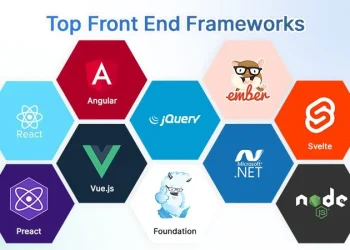Nowadays, having a website is crucial for businesses, whether you want to build an online store or merely a resource for your clients.
Numerous web designers are available to fill this demand, and there are numerous methods for doing so. More choices, though, aren’t always a good thing.
Think about the “choice glut” phenomena, where there are so many possibilities that choosing one becomes difficult because there are so many undesirable options available.
If you have never worked with designers before, the chance of becoming overwhelmed is significantly higher.
For this reason, we’ve created this step-by-step manual to take you through the entire process of hiring a website designer.
1.Writing a brief for your website design
You must be certain of your needs before choosing a web designer. You might be thinking, “Obviously, I need a website.
What kind of website is it then? number of pages What kind of information belongs on each page? What do paragraph text and headings mean? What kind of fashion are you after?
You will need to provide the site designer with the answers to these and other queries.
You might not be fully aware of what a web designer does and does not do if this is your first time having a website created (or dealing with a designer of any kind).
Typically, a web designer will take the content you provide for the website and style it according to your brand and their own knowledge of web design best practices.
In light of this, be sure to have everything prepared beforehand to set up a fruitful partnership with a web designer:
- Digital strategy: What is the purpose of your website? What (measurable) goals are there? This is where a marketing consultant may assist you.
- Market research should take competitors and the target market into account.
- Budget and timeline: Take into account both your ideal and maximum pricing range.
- List of required pages and components: Think about developing a mockup and sitemap.
- Logo and branding: You can get assistance with this from a logo and/or brand designer. Include elements like typefaces and colors, if applicable.
- Content: You can get help with this work from a writer.
- Web designers can source stock photos on their own, but they must still pay for the licensing. The same is true for films. You can supply your own material for a more genuine touch, but keep in mind that outstanding image quality might require hiring a photographer or film producer.
- Style examples: Look through a few websites to find the designs you want to copy or stay away from.
- Files: Be sure you are aware of the kinds of web design files that a developer will require if you are working with them.
Finally, in order to have your project specifications prepared to be given to a designer, you will need to combine all of these components in a creative brief.
- Decide what type of designer you need
The “web designer” is typically the first type of designer that comes to mind when talking about a website. However, the large subject of digital design actually encompasses many more disciplines in addition to web design.
To be confident that a web designer is exactly the kind of designer you need to reach your goals, it is crucial that you grasp the many disciplines. You can want a number of designers or professionals in various circumstances.
The phrase “web designer” generally refers to specialists who concentrate on the visual component (or “front-end”) of a website, i.e. the part that visitors view and interact with.
Using programs like Photoshop or Sketch, they offer offline prototypes of the website. These mockups must be encoded and converted into webpages by web developers, who build the “back-end” code that powers the webpage.
It’s crucial to remember that web development and web design are two distinct professions that you need to combine to create a website.
- Make a list of all potential web designers
Finding the web design agency billings mtis the only thing left to do now that you have a clearer understanding of what needs to be done and who needs to do it.
Of course, in order to ensure that you have the option, you will need to pre-select more than one first.
To do this, cast a wide net and make a list. Let’s take a look at a few of the most popular sources for finding web designers.
Recommendations: Reaching out to people you know in the business world is one of the easiest and most dependable ways to find a web designer.
Find out if they can recommend any web designers they have worked with. In addition to making it easier for you to select a designer, this will guarantee the caliber of their work.
Freelancer platforms are international online communities created especially to provide creatives and clients with a place to connect and collaborate.
Without ever leaving the website, you may explore designers’ portfolios, contact them, negotiate rates, work together in a specific project space, transmit and receive files, make safe payments, and post reviews on platforms like 99designs.
Websites for professional networking: You can post a position on a site like LinkedIn.
This can help you connect with a variety of applicants, but you’ll have to conduct your own screening (although many companies use software to screen CVs automatically).
Although they can also be used to identify local talent, these websites are typically more helpful for permanent roles than for one-time assignments.
Web design firms
Customers may typically get everything they require from marketing consultancy to web design and development at a one-stop shop. Clients get the benefit of a whole team of experts instead of just one web designer.
Nevertheless, the costs are considerable, running into the multiple tens of thousands of euros. On websites like Clutch, which do market research to produce firm lists and rankings, you can look up design agencies.
- Select the best designer for your project
It’s time to select a few candidates from your list. Remember that finding the ideal web designer for your project requires more than just finding a skilled web designer.
You’ll need to look over each designer’s portfolio and evaluate their level of professionalism to locate it.
They should have a strong portfolio, to start. More significantly, it needs to be high caliber throughout. When examining a portfolio, go past the first few pieces (which are typically the best) and make sure it has a wide variety of samples of work of a high standard.
- Agree to a price and terms
The most practical factor to think about when choosing a web designer is whether your budget and timetable align with theirs. Some web designers standardize their prices in terms of price (per page, per hour of work, etc.).
Once they have estimated the quantity of work necessary, others have costs that vary from project to project.
Making sure you comprehend the precise pricing terms is crucial. When will payment be paid, and how? Do versions for tablets and smartphones exist? How many modifications are permitted before they become excessive and incur a fee?
What occurs if building the site takes longer than anticipated? If one of you needs to abandon the project, what happens?





